Abstract
BACKGROUND: The Commission on Cancer of the American College of Surgeons conducted a large, national survey to assess methods of diagnosis, American Joint Commission on Cancer staging, treatment, and outcome of patients with adenocarcinoma of the pancreas. STUDY DESIGN: The survey questionnaire contained 160 questions and covered two study periods, 1983 to 1985 and 1990, for time-trend analysis. Nine hundred seventy-eight institutions throughout the United States voluntarily participated, contributing 8917 case reports for 1983 to 1985 and 8025 reports for 1990, resulting in a total of 16,942 patient reports. Most, but not all, of the participating hospitals maintain approval status with the Commission on Cancer of the American College of Surgeons. RESULTS: The ratio of male-to-female cases was 1:1. Patient characteristics including age, ethnicity, neighborhood income, type of insurance coverage, and hospital characteristics--including annual caseload and type of facility (e.g., teaching, community)--appeared to influence surgical multimodality treatment patterns. The most common presenting symptom was abdominal pain. The reported history of smoking for these patients with pancreatic cancer was higher than U.S. population averages. The frequency of using abdominal computed tomography scans, endoscopic retrograde cholangiopancreatography, carcinoembryonic antigen, and CA 19-9 during patient evaluation all increased. Time trends toward lower operative mortality and more extirpative surgery were reported, as was a slightly higher survival for those patients who were resected surgically. CONCLUSIONS: Pancreatic cancer continues to be a disease of older patients. There were slight improvements in operative mortality. For a highly selective category of patients, cancer-directed surgery offers a chance for cure with excellent operative mortality and acceptable complication rates, especially when performed in institutions that have a 20 or greater case per year experience.
Full text
PDF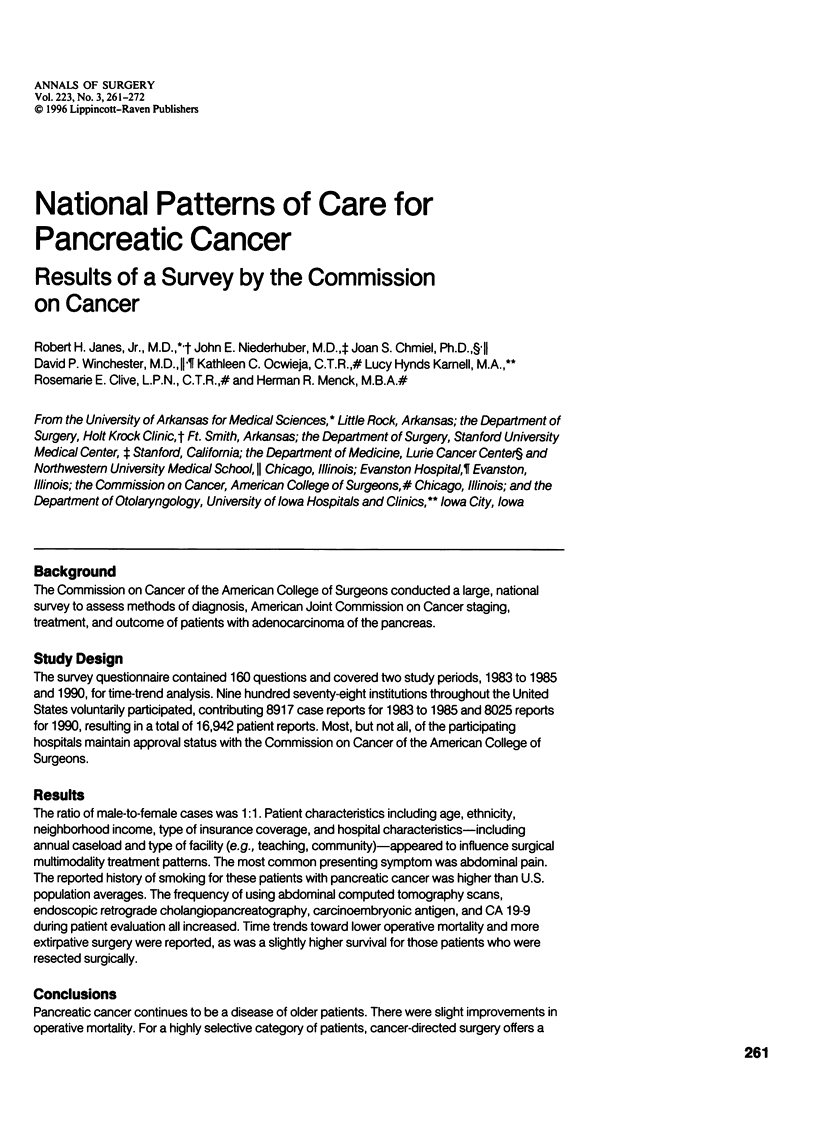
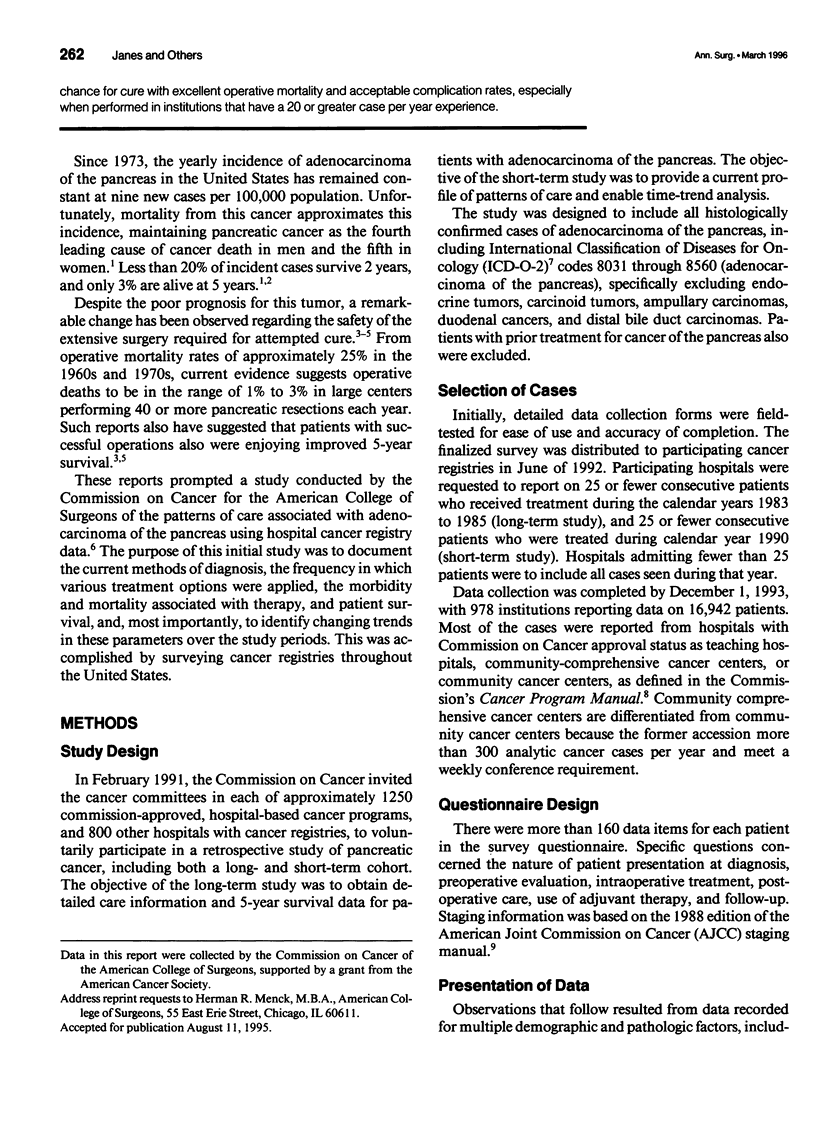
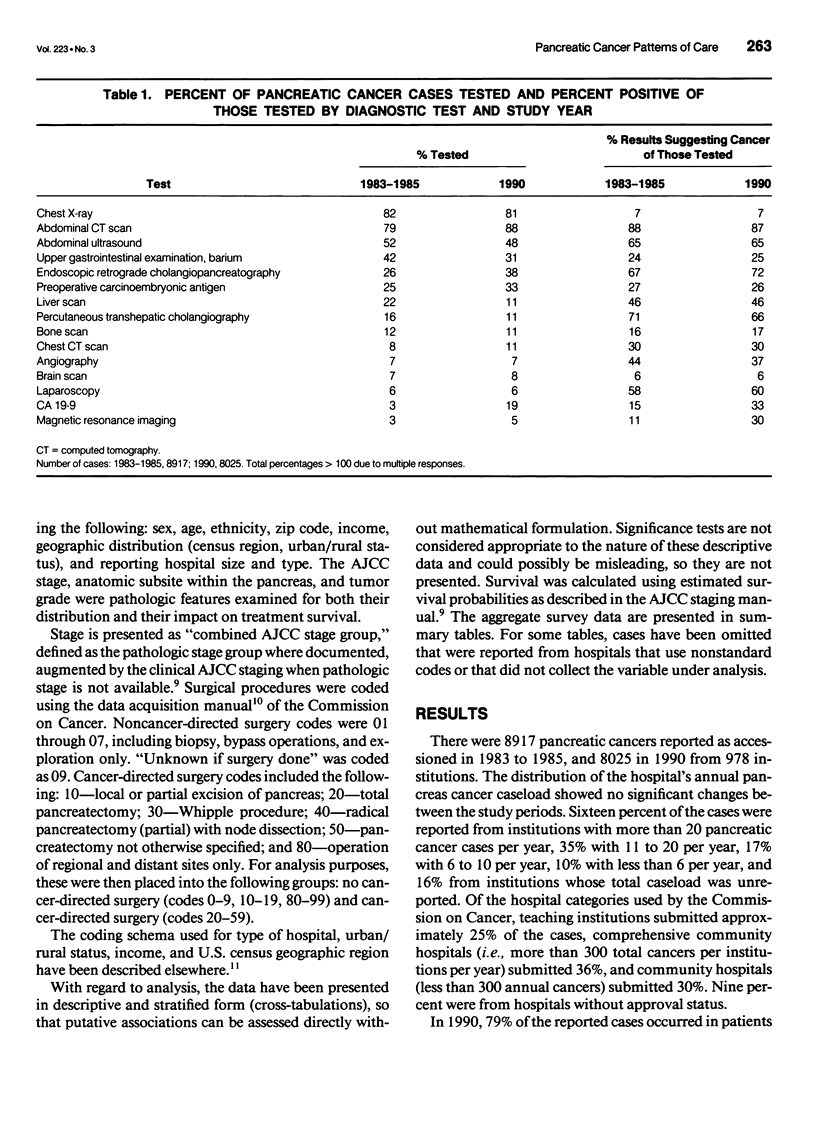
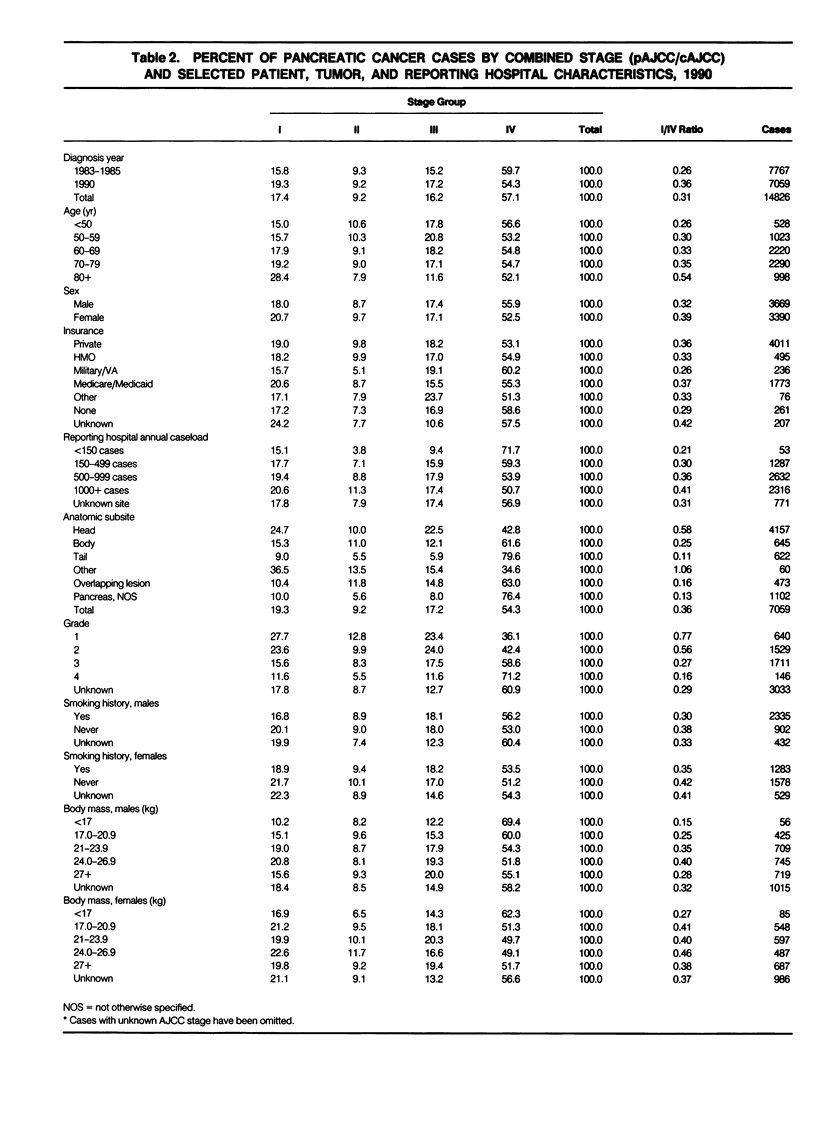
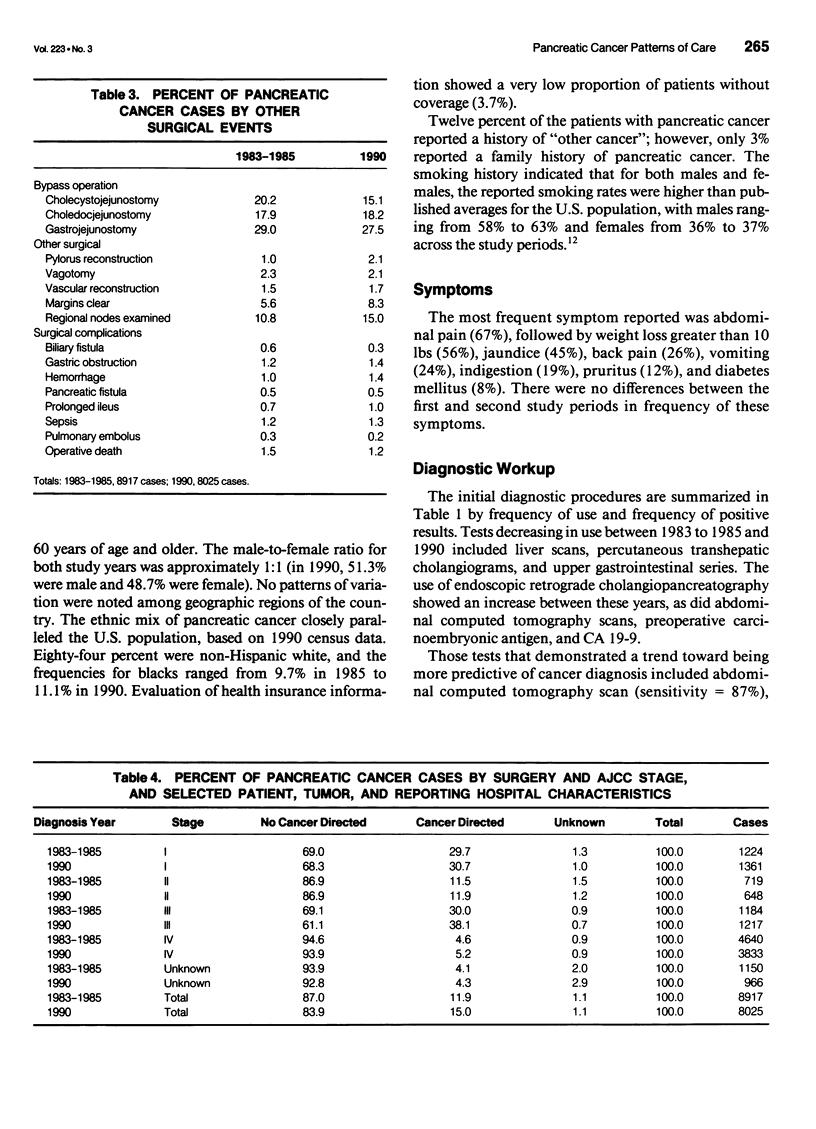
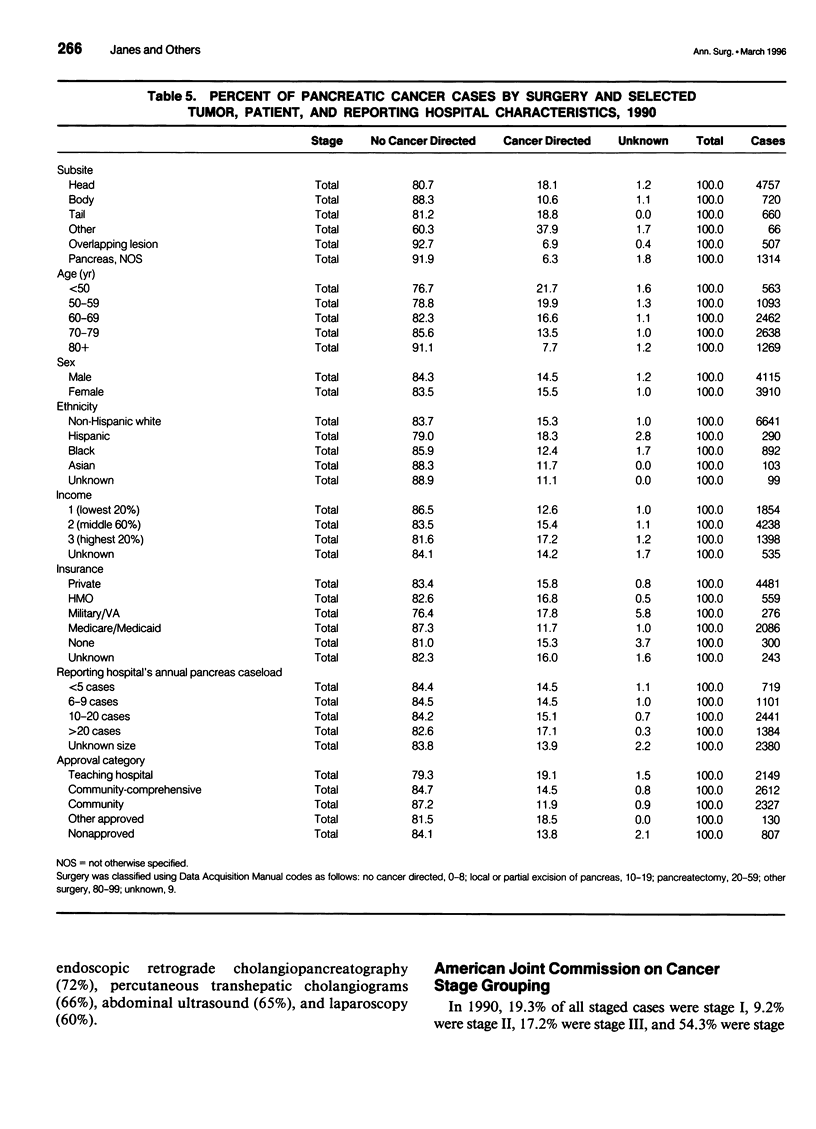
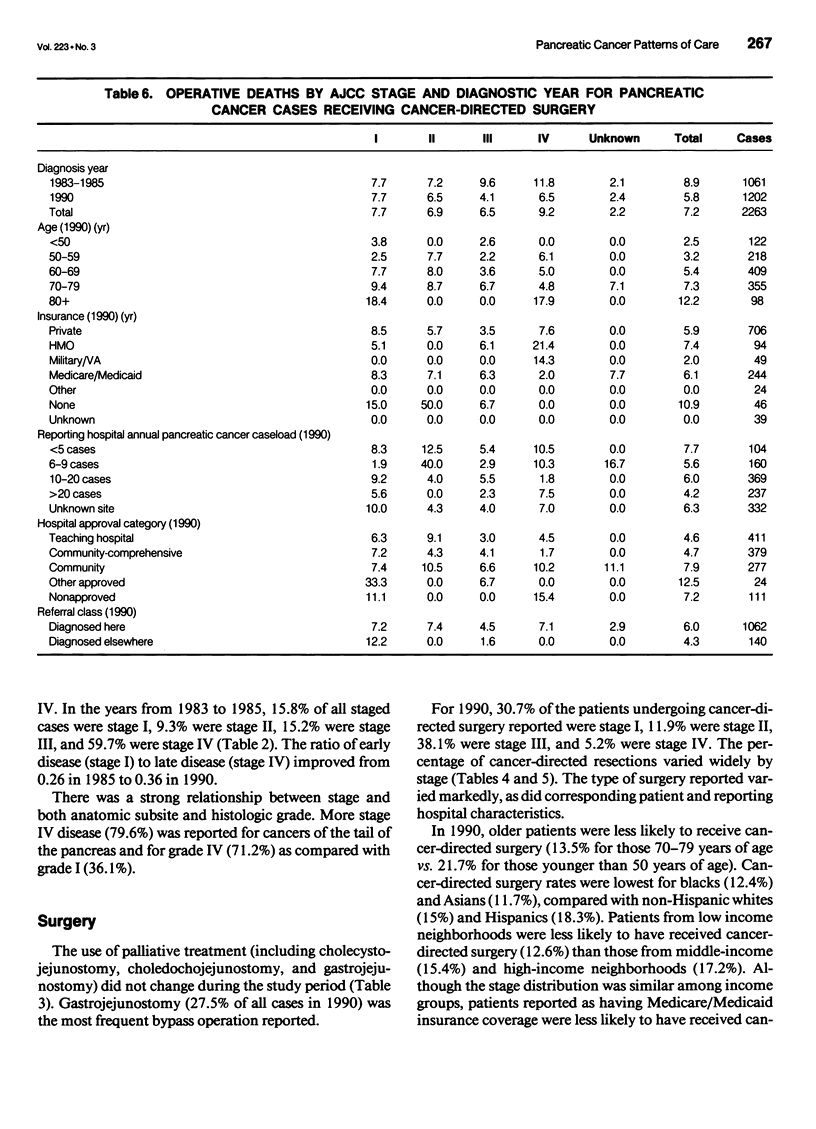

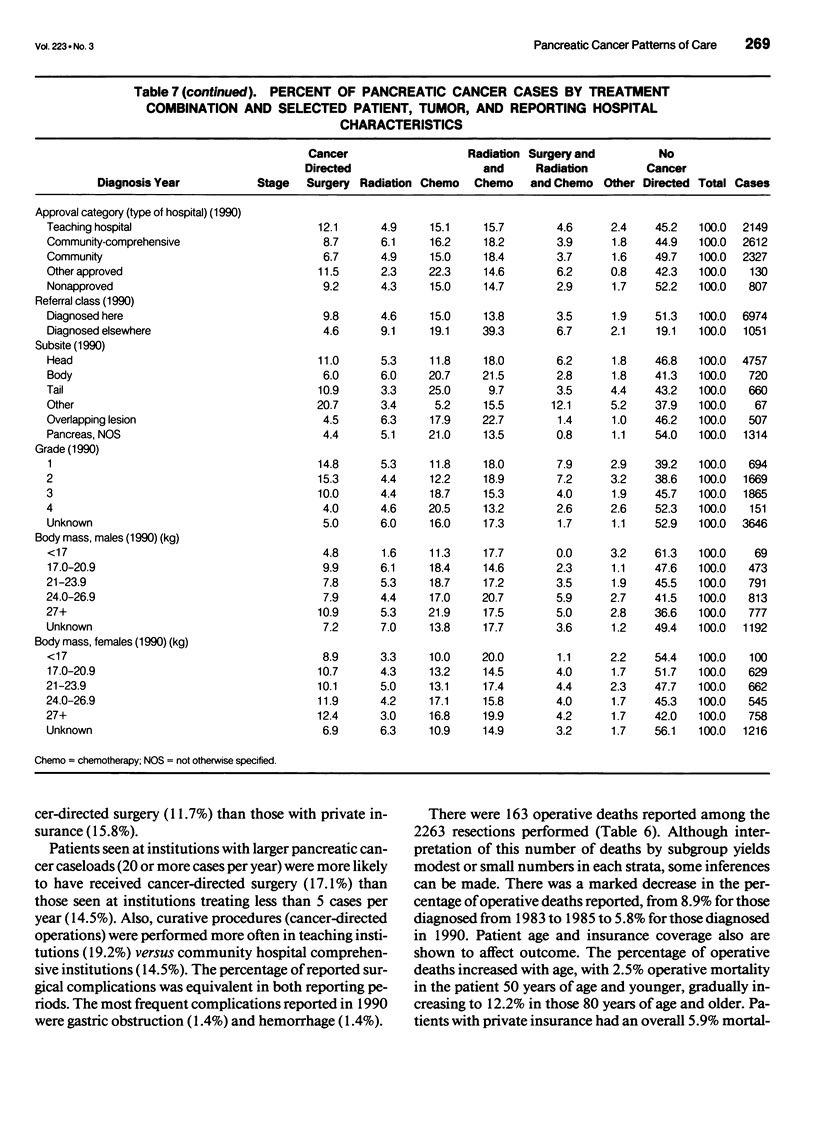
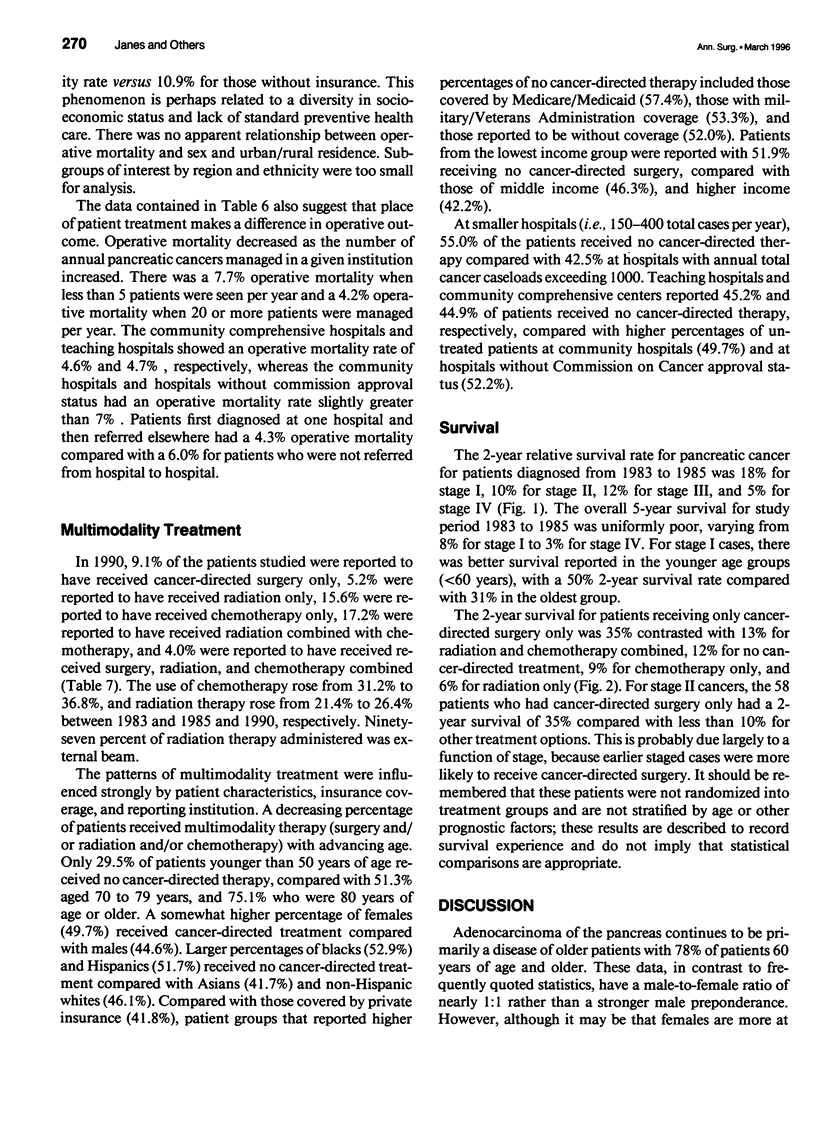
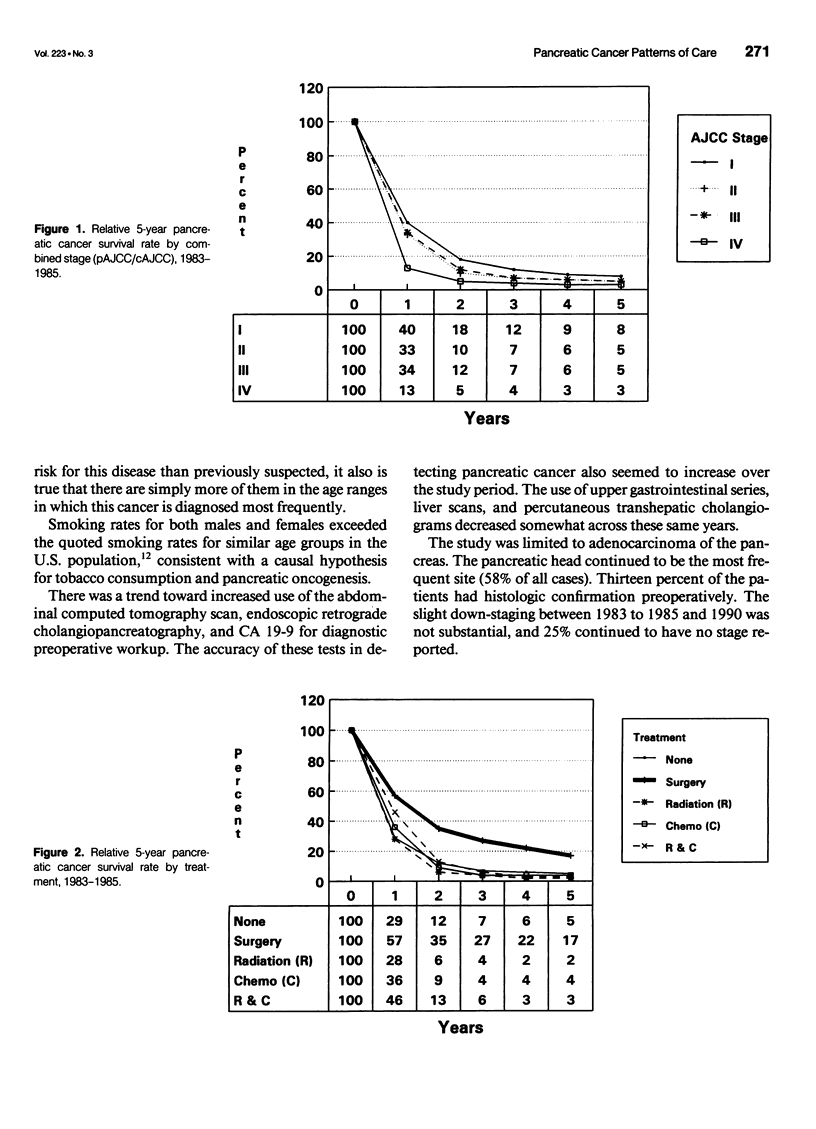
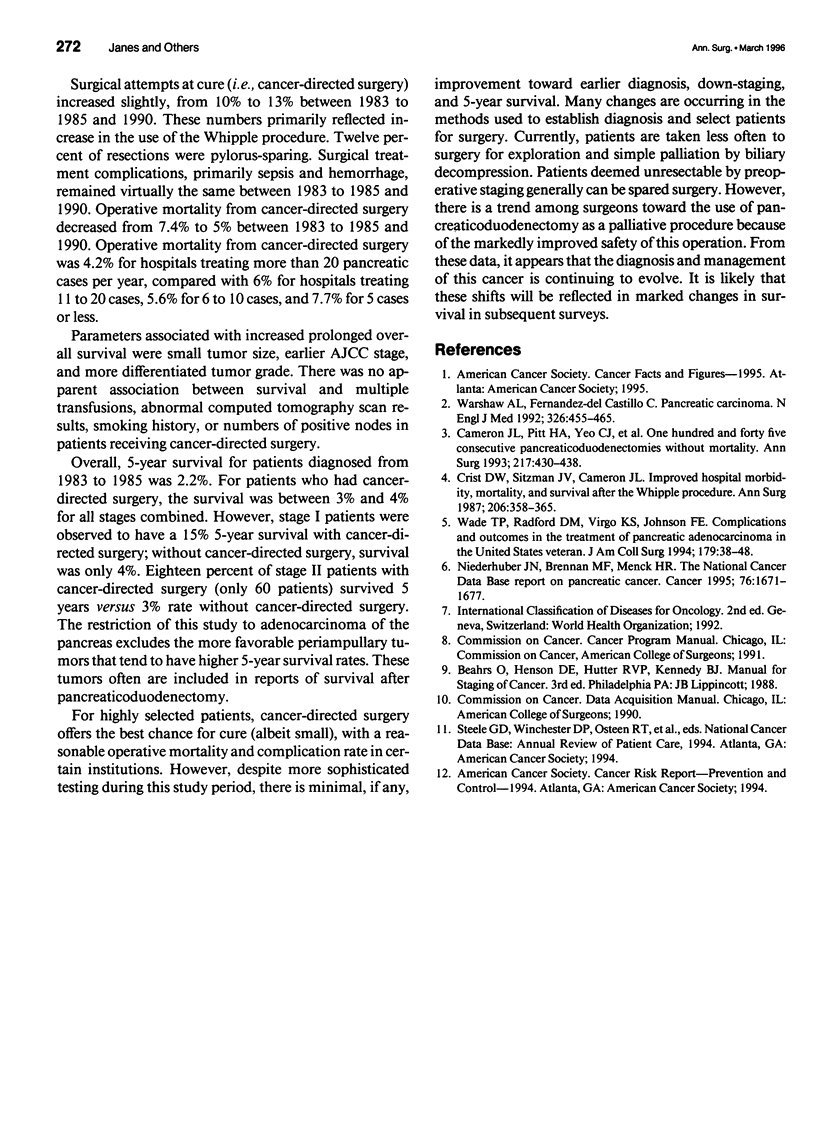
Selected References
These references are in PubMed. This may not be the complete list of references from this article.
- Cameron J. L., Pitt H. A., Yeo C. J., Lillemoe K. D., Kaufman H. S., Coleman J. One hundred and forty-five consecutive pancreaticoduodenectomies without mortality. Ann Surg. 1993 May;217(5):430–438. doi: 10.1097/00000658-199305010-00002. [DOI] [PMC free article] [PubMed] [Google Scholar]
- Crist D. W., Sitzmann J. V., Cameron J. L. Improved hospital morbidity, mortality, and survival after the Whipple procedure. Ann Surg. 1987 Sep;206(3):358–365. doi: 10.1097/00000658-198709000-00014. [DOI] [PMC free article] [PubMed] [Google Scholar]
- Niederhuber J. E., Brennan M. F., Menck H. R. The National Cancer Data Base report on pancreatic cancer. Cancer. 1995 Nov 1;76(9):1671–1677. doi: 10.1002/1097-0142(19951101)76:9<1671::aid-cncr2820760926>3.0.co;2-r. [DOI] [PubMed] [Google Scholar]
- Wade T. P., Radford D. M., Virgo K. S., Johnson F. E. Complications and outcomes in the treatment of pancreatic adenocarcinoma in the United States veteran. J Am Coll Surg. 1994 Jul;179(1):38–48. [PubMed] [Google Scholar]
- Warshaw A. L., Fernández-del Castillo C. Pancreatic carcinoma. N Engl J Med. 1992 Feb 13;326(7):455–465. doi: 10.1056/NEJM199202133260706. [DOI] [PubMed] [Google Scholar]


